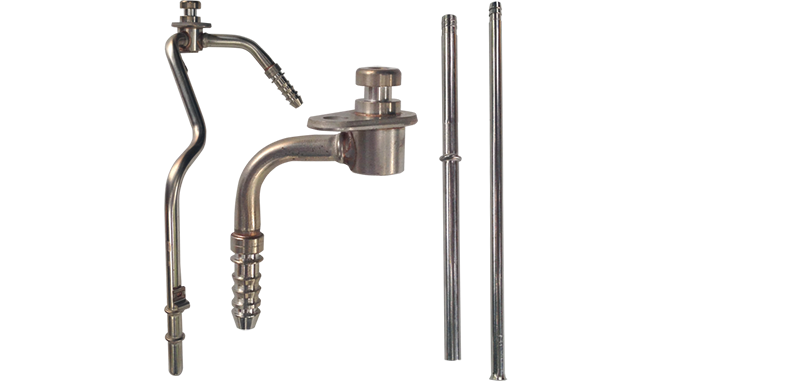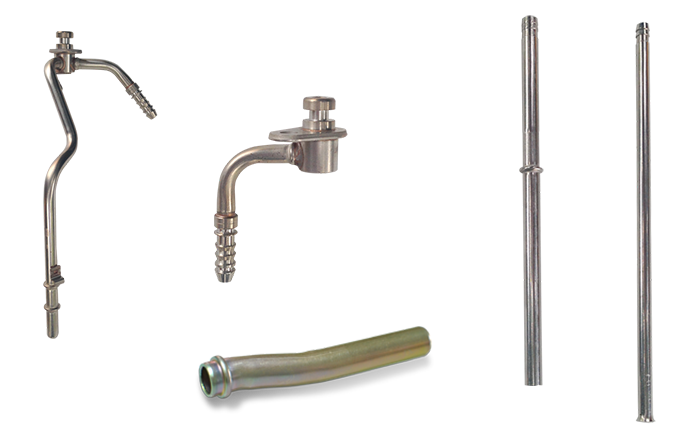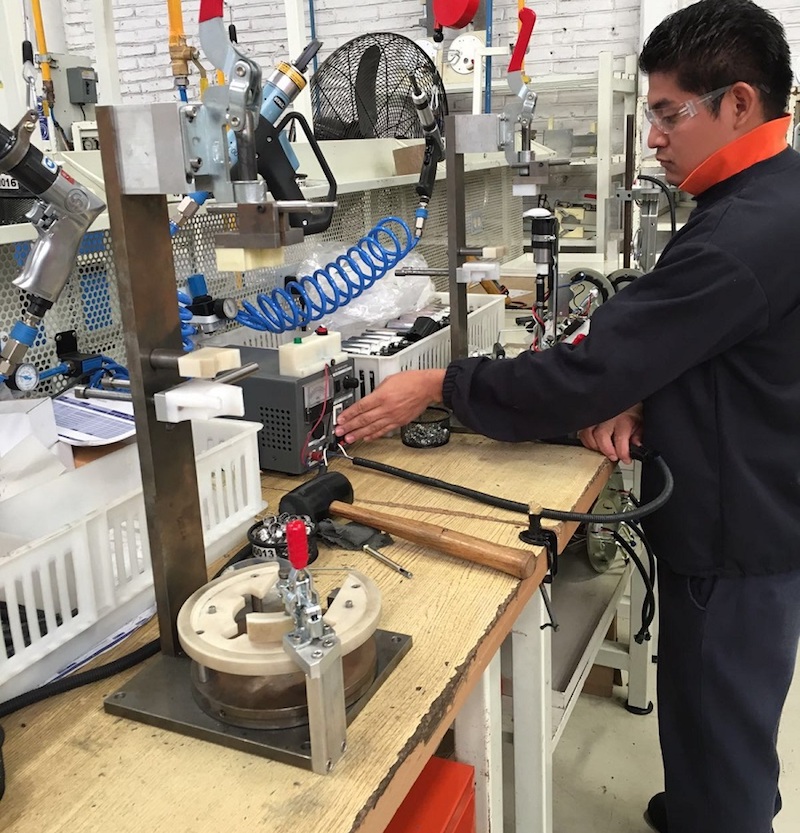How Does Tube End Forming Work?
At Intran we offer a diverse range of services tailored to meet various industrial needs. We offer superior services for producing parts using methods like:
- Spot Welding
- Tube Bending
- Tube Hydroforming
- Controlled Atmosphere Brazing
- End Forming
- And many others (check out the complete list here)
If you’re curious about tube end forming, this post will be your go-to resource. Let’s cover some basics and dive into a few comprehensive insights as well.
Understanding End Forming

End forming refers to a process applied to hollow tubes to modify their ends into specific shapes. End-forming is a technique that is used to alter the shape of a tube ending. End forming was once accomplished using traditional casting methods, but now-a-days we use modern end former machines for enhanced cost-effectiveness.
Common end formations include expansions, curls, flanges, beads, flares, grooving, knurling, reducing, and thickening among others. Almost any metal is a good candidate for end forming including materials like copper, aluminum, brass, steel, and stainless steel. The process can be executed before or after the bending of the tube, an can be followed by operations such as trimming to length if forming follows bending.
Tube end forming is often integrated with other fabrication processes (like tube bending) when working through complicated tube fabrication projects. Utilizing advanced end former equipment allows for a wide array of end shapes, enhancing the functionality and compatibility of the tubes.
The Role Of Tube End Forming In Auto Part Manufacturing

End forming’s utility extends beyond auto manufacturing to sectors like residential and commercial water services, refrigeration, recreation (including ATVs, boats, motorcycles, and side-by-sides), food equipment, aerospace, and furniture production. It’s a highly versatile fabrication process suitable for various applications.
This process is integral in the production of various automotive components, particularly those requiring precise connections and the efficient management of fluids or gases. Components such as exhaust manifolds, catalytic converters, mufflers, A/C lines, and various filters often incorporate end formed tubes for enhanced performance and fit.
Advantages of End Forming
Adopted widely by auto parts manufacturers, end forming offers significant benefits, including:
- Precision: Guarantees exact dimensions for seamless integration with other components.
- Efficiency: A cost-effective method that minimizes waste, as the metal is shaped rather than cut.
The Tube End Forming Procedure
End forming is a straightforward yet effective process:
- A hollow tube is positioned within an end former machine.
- The machine then applies pressure, often hydraulic, molding the tube’s end(s) against a specific forming tool.
End forming requires two key pieces of equipment: the end forming machine and the forming tool. There’s a variety of heavy-duty end forming machines available, including CNC tube processors, die cut presses, and hydroforming machines, each suited to different end shapes. Which tools are used depends upon the volume of parts being produced and the tolerance specifications desired. It’s crucial to ensure the chosen end former manufacturer possesses the right, up-to-date machinery to fulfill your specific forming requirements.
Why Choose Intran For Tube End Forming Services?

Regarded as a leader in end forming services, Intran stands out for several reasons:
- Utilization of state-of-the-art machinery
- Capability to produce a wide range of end-form styles
- Customized service catering to individual design and functional needs
- High-capacity production facilities
- Rigorous testing for leak and structural integrity
To explore more about how Intran can meet your end forming needs, feel free to reach out to us.
